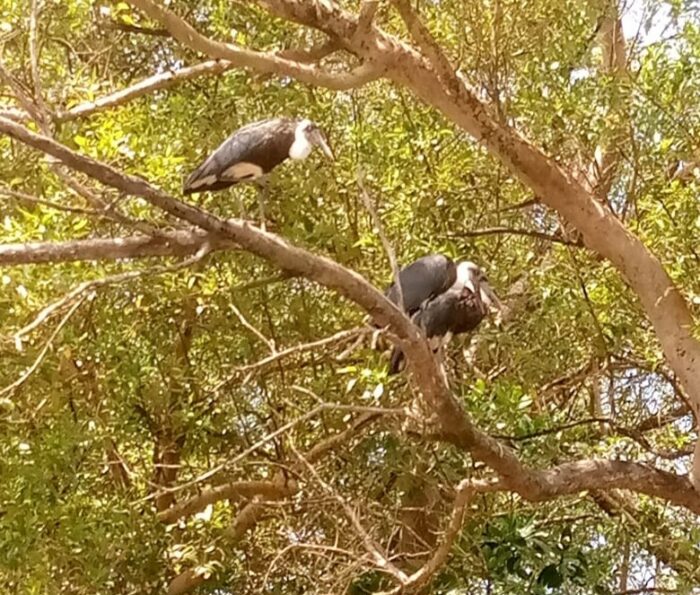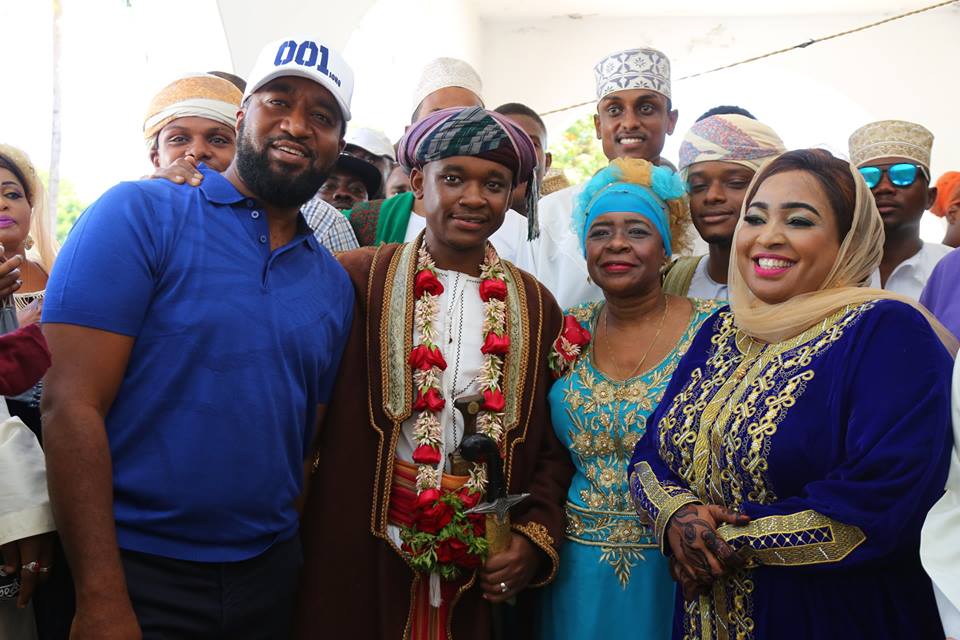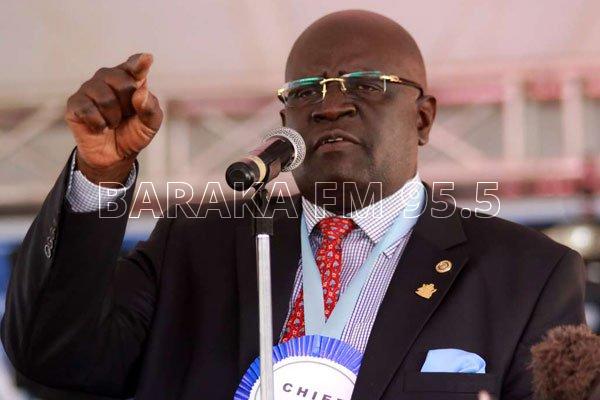Embarking on a coastal adventure in Kenya unveils a diverse range of experiences crafted by the innovative Go Blue Tourism and Cultural Heritage grantees. Funded by the European Union and co-funded and managed by Camoes I.P., these projects are set to transport travelers into a realm where cultural wonders and natural marvels come together, crafting memorable and immersive encounters.
In Kwale County, the Mwazaro BMU Self-Help Group spearheads the Conservation and Development of Pongwe Crocodile-Bird Watching- Three Giants Sisters Cave and Marine Reserve Tourism project. This is a gateway to numerous experiences, from spotting crocodiles along the Ramisi River to exploring the enchanting Three Giant Sisters Caves at Tchwaka.
Visitors are treated to a blend of unique offerings, including bird watching in mangroves, marveling at cave formations, and engaging in educational and technological exchanges at Kijiweni cage farming and the Mwazaro Novel Solar Technology and Refreshment Center.
In Taita Taveta County, the Njama Mizango Cultural Centre Self-Help Group has the Njama Mizango Cultural and Ecotourism Center project. This initiative invites visitors on a cultural journey that goes beyond conventional tourism, empowering vulnerable populations through employment and business opportunities. The project creates authentic encounters, focusing on cultural preservation and ecotourism activities that contribute to the local community’s sustainable development.
Moi University, in Kilifi County, takes a pioneering approach with the Stimulating Sustainable Coastal Economic Growth through Cultural Heritage Entrepreneurship and Digitization Project. The focus here is on building skills, creating jobs, and leveraging digital platforms to maximize the benefits of tourism and cultural heritage. Targeting youth in Kilifi County, the project offers a blend of traditional and modern experiences, fostering a connection between the past and the future.
Baruu Collective Ltd. introduces “Imani,” a project dedicated to the preservation and documentation of traditional African indigenous faith systems along the coast of Kenya. Through audio-visual components like short films, music recordings, and podcasts, the project bridges generations, allowing elders to share their knowledge while the youth interpret and breathe new life into ancient traditions.
In Kilifi County, the Kenya Muslim Youth Alliance presents the Integrated Eco-tourism and Agro-biodiversity Conservation for Employment, Sustainable Livelihoods and Food Security Options Promotion in Kaya Mudzi Muvya project. Balancing conservation and community empowerment, this initiative is contributing to increased eco-tourism, sustainable employment, and income generation options, inviting visitors to explore the sacred Kaya Mudzi Muvya forest region through enhanced conservation and preservation of the Rabai community’s cultural heritage.
The Kwetu Training Centre for Sustainable Development is transforming Mtwapa Creek in Kilifi County into an innovative eco-tourism destination. This venture offers sustainable income opportunities to local youth, inviting visitors to partake in a modular Eco and cultural tour package encompassing fishponds, beekeeping, and mangrove boardwalks, providing a holistic experience.
The Tana River County Umbrella Organization for PWDs introduces the “Garsen Cultural Centre” project, aiming to equip and operationalize the center as an artistic empowerment hub, promoting and preserving culture while creating jobs in the Tourism and Cultural Heritage cross-sector. Activities include cultural sensitization, upskilling, mentorship, and marketing of community cultural heritage products.
The Kaya Kinondo Forest Conservation Group, based in Kwale County, focuses on improving cultural tourism in the Kaya Kinondo heritage site. Their project enhances community-based tourism within the local heritage site, creating attractive cultural tourism products through skills enhancement and equipment upgrades, ensuring a harmonious blend of tradition and tourism.
Moreover, Kaaribu Experience in Kwale County directly markets and promotes niche cultural experiences offered by locals to a global audience through an online interactive system. Through the platform, Visitors can now engage with local communities, supporting sustainable tourism and fostering a connection between local communities and global travelers.
The National Museums of Kenya-Lamu Museums offer the Kijumwa Cultural Centre project in Lamu County. This Youth Heritage Hub aligns the local community with their natural and social environment, infusing arts with Information and Communication Technology (ICT). The project provides a modern platform for local cultural practitioners, empowering youth through creative entrepreneurial programs.
Mombasa County is a hub of innovation with the “Mombasa Tourism Innovation Lab” project by Global Development Incubator. This initiative creates a hub for incubating and refining ideas in tourism and cultural development, promoting and digitizing youth-led businesses. The goal is to transform Mombasa into a dynamic hub of tourism innovation, inviting visitors to witness and participate in the evolution of cultural experiences.
Additionally, Common Interest in Mombasa County pioneers Commercial crafts for industrial development. Inspired by the rich traditional heritage of coastal communities, this project preserves and links traditional art and crafts into modern value chains, promoting traditional art, crafts, and skills while inviting visitors to explore and support the preservation of cultural heritage.
The African Pro-Poor Tourism Development Centre creates a symphony of empowerment in Kwale County. Through their project, five Community-Based Organizations receive comprehensive business development training to guide them towards sustainable operations, fostering a sense of pride and economic value in cultural tourism activities.
Additionally, the World Student Community for Sustainable Development is orchestrating a cultural heritage symphony in Kwale County through the development of a Mijikenda Cultural and Heritage Resource Center and Library. This project aims to collect, organize, store, and preserve Mijikenda cultural and heritage evidence for tourist attractions, facilitating capacity building and training for youth and women groups.
The Tanafrik Initiative establishes a framework for cultural tourism in Tana River County. Their project promotes cultural heritage, biodiversity conservation, and poverty alleviation, intertwining environmental conservation, increased disposable income, and community cohesion through cooperative societies.
The Tana Action Initiative introduces a dynamic essence to Tana River County through its “Ibuka Culture Designers” project. This community-based organization creates an inviting space for cultural exploration and development, providing opportunities for youths and women to showcase their talents in fashion, weaving, beading, and more. The project resonates as a vivacious celebration of cultural expression and community empowerment.
The Go Blue TCH grantees’ innovative projects are offering unique and sustainable tourism experiences and contributing to the economic empowerment of local communities while inviting visitors to immerse themselves in the rich tapestry of Kenya’s coastal heritage. As these initiatives continue to flourish, they not only serve as beacons of cultural preservation but also as catalysts for transformative and memorable travel experiences along the Kenyan coast.















